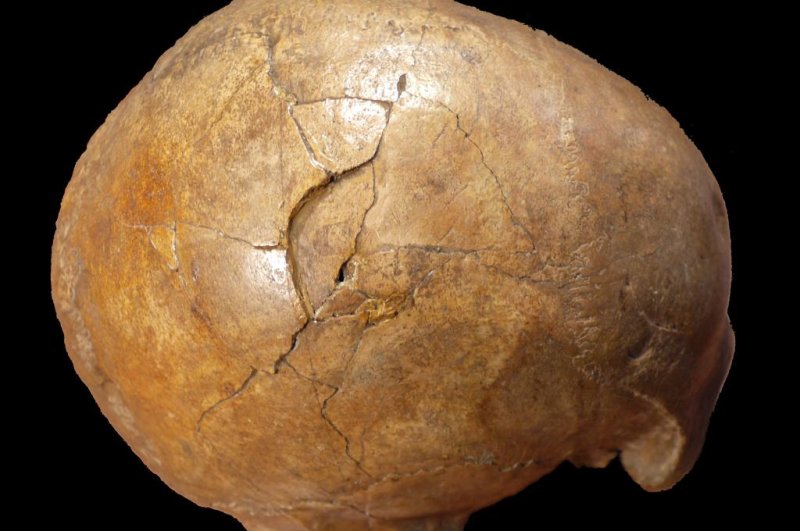Scientists concluded that the injuries suffered by an Upper Paleolithic man were caused by a violent, face-to-face confrontation. Photo by Elena Kranioti, et al./PLOS One
July 5 (UPI) -- The mystery of an ancient fractured skull has been settled. An international team of researchers in Europe ruled foul play was to blame for the Upper Paleolithic man's head injury.
The 33,000-year-old remains of the Stone Age man were found in a Transylvanian cave during World War II. All that was left of him was a skull. Miners turned over the skull to scientists, but their initial documentation failed to mention fracturing.
"Despite good quality photographs of the rest of the cranium, [scientists] only published blurry photos of the side with large fractures," Elena Kranioti, researcher at the University of Crete, told UPI.
"Some scientists identified the trauma as perimortem back in 1979, while others in more recent publications disregarded [the fractures] completely, probably because it was not described in the original report or because they focused on evolutionary questions."
Kranioti and her colleagues decided to re-examine the evidence. Researchers produced a dozen skull-like spheres made of synthetic bone, each filled with ballistic gelatin, and subjected them to a variety of experimental trauma simulations.
"We simulated the most possible scenarios: fall from height, blow with a wooden bat, with a rock, double blows, et cetera," Kranioti said.
Their analysis of the skull showed there were actually two distinct injuries to the right side of the skull. Researchers identified a linear fracture at the base of the skull, as well as a depressed fracture on the right side of the cranial vault. Simulations proved a series of blows by a bat best explained the injuries.
Kranioti and her colleagues shared their findings this week in the journal PLOS One.
The fracturing, scientists concluded, was not caused by an accident or post-mortem damage. Instead, a face-to-face confrontation turned violent some 33,000 years ago -- an Upper Paleolithic murder.
"The Upper Paleolithic is a time period that is usually described as showing rapid cultural and technological innovation, as well as intensified symbolic behavior and artistic expression," We show that Upper Paleolithic humans were also capable of murder," Katerina Harvati, professor at the University of Tübingen, wrote in a related paper.
"Even if it is not necessarily surprising, it shows that violent behavior was also present in early modern human hunter-gatherers, and not only in archaic humans, such as Neanderthals."















